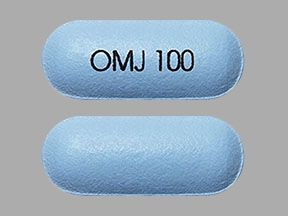Generic Nucynta ER Availability
Last updated on Apr 10, 2025.
See also: Generic Nucynta
Nucynta ER is a brand name of tapentadol, approved by the FDA in the following formulation(s):
NUCYNTA ER (tapentadol hydrochloride - tablet, extended release;oral)
-
Manufacturer: COLLEGIUM PHARM INC
Approval date: August 25, 2011
Strength(s): EQ 50MG BASE [RLD], EQ 100MG BASE [RLD], EQ 150MG BASE [RLD], EQ 200MG BASE [RLD], EQ 250MG BASE [RLD]
Is there a generic version of Nucynta ER available?
No. There is currently no therapeutically equivalent version of Nucynta ER available in the United States.
Note: Fraudulent online pharmacies may attempt to sell an illegal generic version of Nucynta ER. These medications may be counterfeit and potentially unsafe. If you purchase medications online, be sure you are buying from a reputable and valid online pharmacy. Ask your health care provider for advice if you are unsure about the online purchase of any medication.
See also: Generic Drug FAQ.
Related patents
Patents are granted by the U.S. Patent and Trademark Office at any time during a drug's development and may include a wide range of claims.
-
Titration of tapentadol
Patent 11,344,512
Issued: May 31, 2022
Inventor(s): Lange; Claudia et al.
Assignee(s): Grünenthal GmbH (Aachen, DE)The use of tapentadol for the manufacture of a medicament comprising at least one administration unit A containing dose a of tapentadol and at least one administration unit B containing dose b of tapentadol, where dose a
Patent expiration dates:
- April 21, 2028✓
- April 21, 2028✓
- April 21, 2028
-
Titration of tapentadol
Patent 11344512*PE
Issued: May 31, 2022
Inventor(s): Lange; Claudia et al.
Assignee(s): Grünenthal GmbH (Aachen, DE)The use of tapentadol for the manufacture of a medicament comprising at least one administration unit A containing dose a of tapentadol and at least one administration unit B containing dose b of tapentadol, where dose a
Patent expiration dates:
- October 21, 2028
- October 21, 2028
-
Crystalline forms of (-)-(1R,2R)-3-(3-dimethylamino-1-ethyl-2-methylpropyl)-phenol hydrochloride
Patent 7,994,364
Issued: August 9, 2011
Inventor(s): Fischer; Andreas et al.
Assignee(s): Gruenenthal GmbH (Aachen, DE)A hitherto unknown crystalline form of (-)-(1R,2R)-3-(3-dimethylamino-1-ethyl-2-methylpropyl)-phenol hydrochloride, pharmaceutical compositions containing the new crystalline form, methods of producing the new crystalline form, and a related method of use including treatment of, e.g., pain and/or urinary incontinence.
Patent expiration dates:
- June 27, 2025✓✓✓
- June 27, 2025✓✓✓
- June 27, 2025
-
Crystalline forms of (-)-(1R,2R)-3-(3-dimethylamino-1-ethyl-2-methylpropyl)-phenol hydrochloride
Patent 7994364*PED
Issued: August 9, 2011
Inventor(s): Fischer; Andreas et al.
Assignee(s): Gruenenthal GmbH (Aachen, DE)A hitherto unknown crystalline form of (-)-(1R,2R)-3-(3-dimethylamino-1-ethyl-2-methylpropyl)-phenol hydrochloride, pharmaceutical compositions containing the new crystalline form, methods of producing the new crystalline form, and a related method of use including treatment of, e.g., pain and/or urinary incontinence.
Patent expiration dates:
- December 27, 2025✓
- December 27, 2025
-
Use of 1 phenyl-3-dimethylamino-propane compounds for treating neuropathic pain
Patent 8,536,130
Issued: September 17, 2013
Inventor(s): Christoph Thomas & Friderichs Elmar & Koegel Babette-Yvonne & Meen Murielle
Assignee(s): Gruenenthal GmbHUse of 1-phenyl-3-dimethylaminopropane compounds for the production of medicaments for treating neuropathic pain, preferably polyneuropathic pain, also preferably diabetic neuropathic pain, more preferably diabetic peripheral neuropathic pain, and furthermore preferably for treating diabetic peripheral neuropathy.
Patent expiration dates:
- September 22, 2028✓
- September 22, 2028
-
Use of 1 phenyl-3-dimethylamino-propane compounds for treating neuropathic pain
Patent 8536130*PED
Issued: September 17, 2013
Inventor(s): Christoph Thomas & Friderichs Elmar & Koegel Babette-Yvonne & Meen Murielle
Assignee(s): Gruenenthal GmbHUse of 1-phenyl-3-dimethylaminopropane compounds for the production of medicaments for treating neuropathic pain, preferably polyneuropathic pain, also preferably diabetic neuropathic pain, more preferably diabetic peripheral neuropathic pain, and furthermore preferably for treating diabetic peripheral neuropathy.
Patent expiration dates:
- March 22, 2029✓
- March 22, 2029
More about Nucynta ER (tapentadol)
- Check interactions
- Compare alternatives
- Pricing & coupons
- Reviews (81)
- Drug images
- Latest FDA alerts (1)
- Side effects
- Dosage information
- During pregnancy
- Drug class: Opioids (narcotic analgesics)
- Breastfeeding
- En español
Patient resources
Professional resources
Other formulations
Related treatment guides
Glossary
| Term | Definition |
|---|---|
| Drug Patent | A drug patent is assigned by the U.S. Patent and Trademark Office and assigns exclusive legal right to the patent holder to protect the proprietary chemical formulation. The patent assigns exclusive legal right to the inventor or patent holder, and may include entities such as the drug brand name, trademark, product dosage form, ingredient formulation, or manufacturing process A patent usually expires 20 years from the date of filing, but can be variable based on many factors, including development of new formulations of the original chemical, and patent infringement litigation. |
| Drug Exclusivity | Exclusivity is the sole marketing rights granted by the FDA to a manufacturer upon the approval of a drug and may run simultaneously with a patent. Exclusivity periods can run from 180 days to seven years depending upon the circumstance of the exclusivity grant. |
| RLD | A Reference Listed Drug (RLD) is an approved drug product to which new generic versions are compared to show that they are bioequivalent. A drug company seeking approval to market a generic equivalent must refer to the Reference Listed Drug in its Abbreviated New Drug Application (ANDA). By designating a single reference listed drug as the standard to which all generic versions must be shown to be bioequivalent, FDA hopes to avoid possible significant variations among generic drugs and their brand name counterpart. |
Further information
Always consult your healthcare provider to ensure the information displayed on this page applies to your personal circumstances.

